The American west has a sprawling network of dams, reservoirs and pipelines that brings a supply of water to its cities and farms. But overexploitation and a two-decade dry spell have put a severe strain on the resources, with reserves dwindling to historic lows in some areas. The situation will only get worse in the coming decades, warn scientists, as surging populations will boost freshwater demand and a hotter, drier climate will bring deeper droughts and more erratic precipitation patterns.
The response has traditionally involved expanding supplies by more diversions, wells and dams and mining more aquifers. But experts say new water-sourcing approaches are also needed.
One such is rainwater harvesting. The term describes a process where precipitation is captured from a catchment area like a roof and directed to a storage tank or a reservoir. From there, water can be used for irrigation or to supply humans and animals. The technique was used more than 4,000 years ago in Palestine, Greece and ancient Rome, where cisterns captured rain that drained from plazas and rooftops to supplement the city’s supply from aqueducts.
Today, rainwater capture is used across the world. In China, more than 22 million people across 17 provinces have their water supply bolstered by rainwater, according to researchers. In Thailand, a large fraction of the population in rural areas rely on rainwater harvesting for agriculture and drinking purposes. The practice is also popular in India, Mexico, Egypt, Sri Lanka, Australia and Bangladesh.
Rainwater catchment is still a relatively niche water-supply strategy across the western US. But this lo-tech and decentralized approach has been gaining momentum in recent years. Here we highlight individuals who are among the vanguard of practitioners.
The rancher
Bob Durham has ranched cattle in the high plains of the Texas panhandle his entire life and remembers when water flowed in bounteous quantities under his ranch in Abernathy, in Hale county. But that abundance has declined year after year, until one day in the drought-stricken summer of 2015 the wells supplying the operation ran dry.
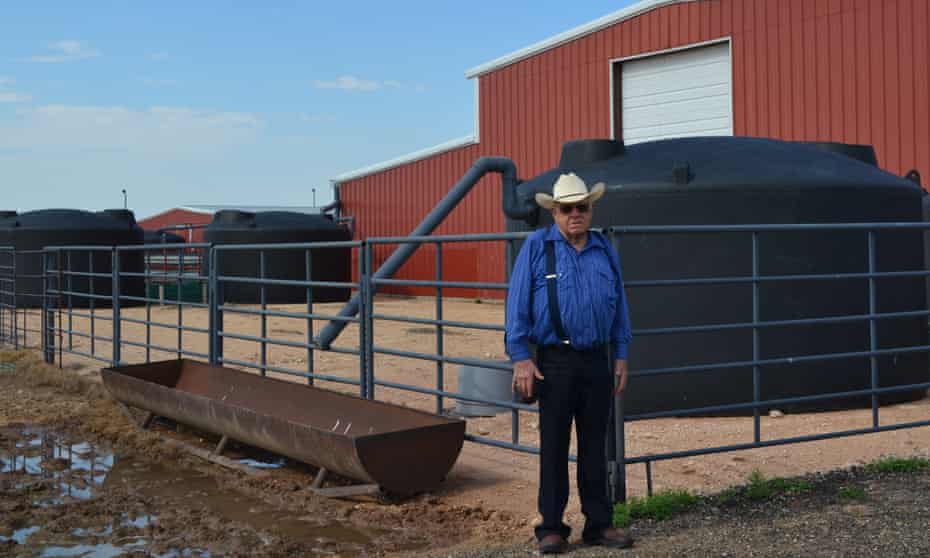
“We had to haul water from Oklahoma and ultimately sell most of the livestock,” says the 88-year-old, who runs the land his father homesteaded a century ago along with his wife and two sons. “The water came back to my wells six months later when the rains recharged our aquifer, which made me realize I needed to move away from groundwater dependence.”
With that in mind, Durham went to the local Natural Resources Conservation Service office where he was advised to apply for possible financial assistance for an agricultural rainfall water harvesting system.
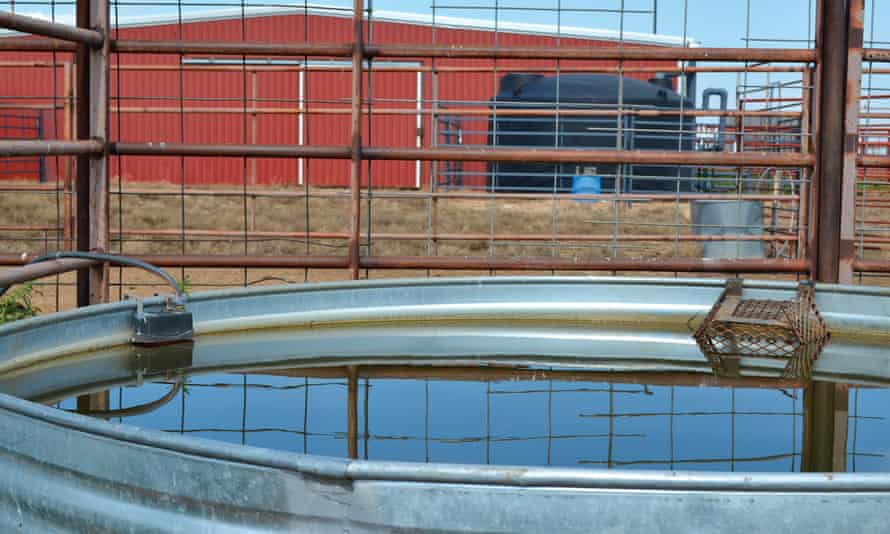
“I’ve had an interest in water harvesting for years,” said Durham. “Once they let me know the practice was available in the district, I signed up immediately.”
Six grey rainwater collection cisterns now sit next to his two barns. Roof gutters capture rainfall and channel it into a pipe, where a flush diverter separates the first flow of rainwater – which is the dirtiest –before it’s stored in the 5,000-gallon tanks. The water is then delivered, via gravity, through a pipeline to drinking troughs on nearby pastures, where Durham’s cattle graze.
While the amount of water the cows drink depends completely on the weather and the moisture in the grass, Durham says a two-inch rain on his barns yield enough water to meet the needs of 25 head of cattle for one month. Overall, he estimates his tanks catch about 200,000 gallons of water on an average each year. “It’s surprising how much water comes off a roof,” he said.
Durham still pumps some water during the low rainfall months of December and January, but he said he plans to install four more tanks on his property to further reduce the need to pump water from the underlying aquifer. He hopes more people in the area will follow his lead and install their own rainwater harvesting system.
“It’s just so important that we save our water, underground as well as surface water, too,” Durham said. “You can’t have life without water.”
The urban gardener
When Jamiah Hargins started growing fruits and vegetables in the front yard of his West Adams, Los Angeles, property, it was mostly because he felt the duty as a parent to make fresh food accessible to his newly born daughter, Trianna.
But when it came time to harvest his crops, Hargins realized that the small plot produced more than they could eat. Not wanting all the herbs, lemons and beans to go to waste, he turned to social networks to gauge his neighbors’ interest in a crop swap. The turnout was substantial. About 15 people came to the first meetup he organized, then 20, then 30. Now in its second year, the group has become an organization known as Crop Swap LA, a startup that helps homeowners turn urban spaces such as front yards, backyards and rooftops into microfarms.
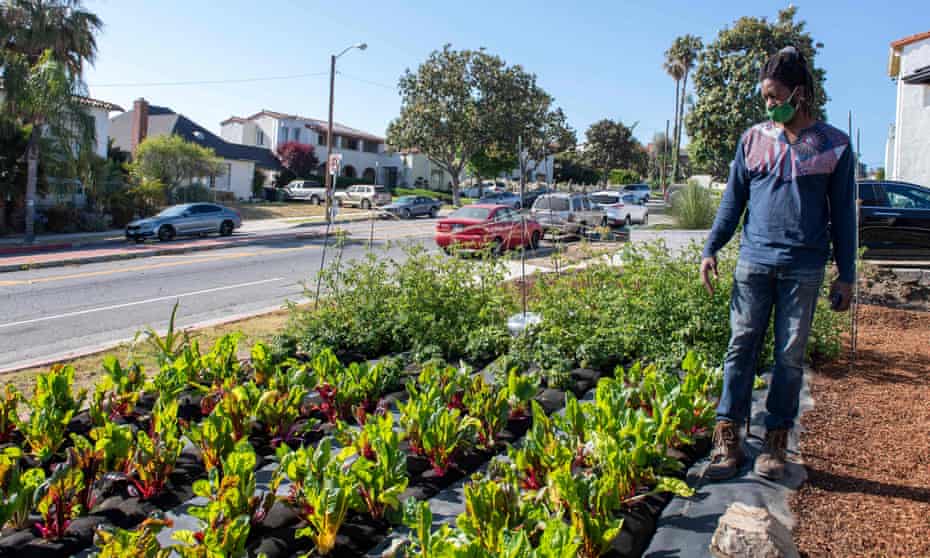
Today Hargins cultivates more than 600 plants on his urban farm and feeds about 50 families throughout the majority Black neighborhood where he lives. The whole operation is supported by two basins that capture rainwater and irrigate the crops from the top, imitating rainwater falling during times of drought. A recycling system then cycles water through the soil, allowing Hargins to use a tiny fraction of the water needed to keep a lawn green in southern California’s arid climate.
“We use less than 10% of the water previously used to grow grass to now grow food,” says the 37-year-old former stock and equity trader. “I think about 800 gallons per day were needed to keep a yard this size. It’s astonishing how much it is when you really count it,” he says, noting that water bills immediately dropped and stayed low.
For Hargins, his microfarm, which he named Asante after a Swahili word meaning thank you, is a proof of concept for the larger goal to grow and distribute nutrient-rich food hyper-locally to underserved communities in south LA, large swaths of which suffer from low access to fresh food. “Affordable and easy access to healthy and nutritious food is a right, not a luxury,” says Hargins.
Ultimately, Hargins sees the concept underlying Crop Swap LA as a way to tackle the region’s worsening water woes. “LA depends on the Colorado River Basin for all of its water, and that will become scarcer due to the cost, politics and climate change,” he says. “Capturing as much rainfall as possible for future reuse must be part of the city’s next sustainable evolution.”
The guru
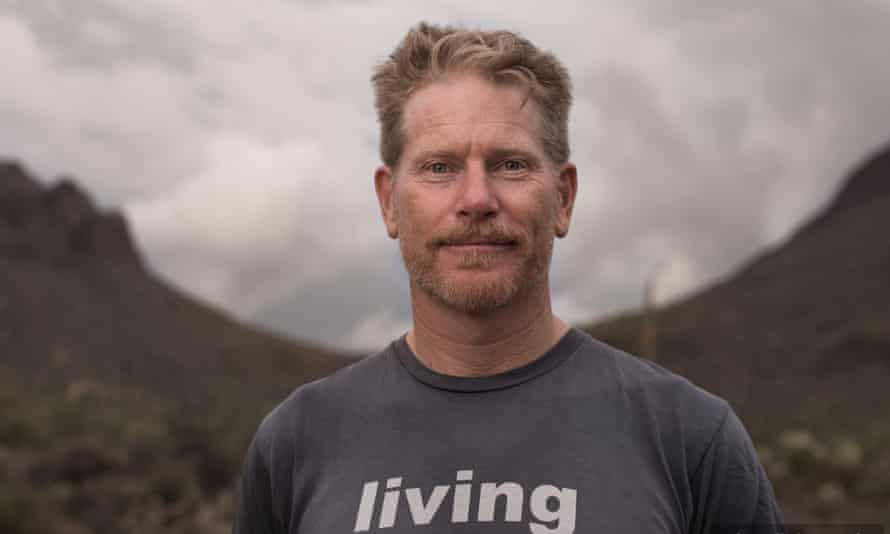
At his home near downtown Tucson, Arizona – where just 12in a year fall from the sky – Brad Lancaster can harvest as much rain to meet most of his water needs. Roof runoff collected in cisterns and earthen berms provides what he needs to bathe, cook and drink year-round.
When Lancaster gets thirsty, he drinks filtered rain, known as sweet water, “because it’s never picked up the salts and minerals you would find in ground and surface water”, he says. When he wants a hot shower, he places his outdoor water tank facing south to collect the sun’s rays. To water his abundant gardens, he directs stormwater runoff from the adjoining pathways and rainwater leftover from the shower, sink and washing machine to the roots of trees around his yard.
“More rain falls on the hardscapes and roofs in Tucson than the city uses in a year,” Lancaster says. “That means we have all the water we need, even in the desert – we just got to capture it and reuse it instead of letting it go to the drain.”
These days, Lancaster is something of a guru in the field. He has written two books on rainwater harvesting and does a hundred water-harvesting public talks and workshops a year throughout the United States, the Middle East, Mexico, Europe, Asia and Africa. But he started out as an outlaw.
Nearly two decades ago, he illegally cut his sidewalk curbs to allow storm water to rush off the street and infiltrate into roadside soil beds home to native trees. Today, these and over 1,000 trees that Lancaster and volunteers have planted across the neighborhood provide shade, cooling and food. And cutting holes in the curbs has not only become legal, it is even sanctioned by the city.
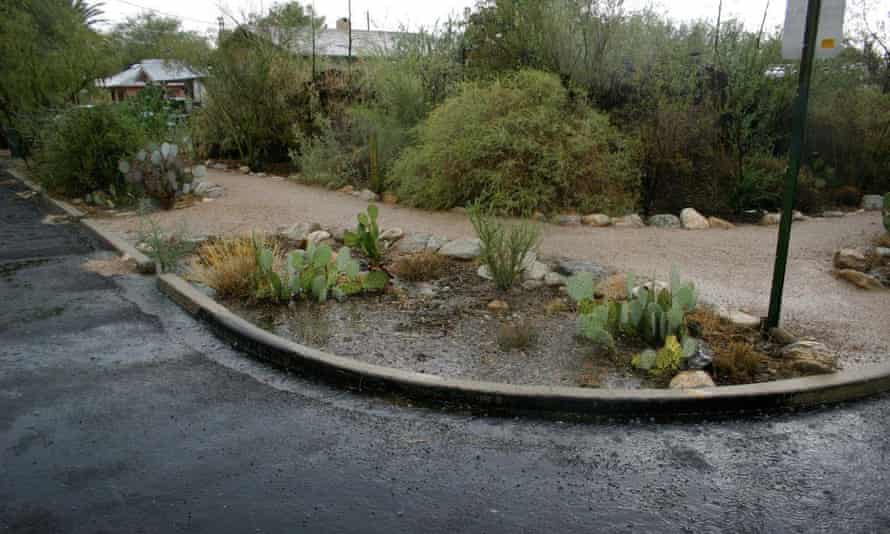
Lancaster believes a mainstream adoption of the concept would help reduce the city’s reliance on water sucked from the ground and imported from the Colorado River, while enabling multiple beneficial effects, such as lowering water bills, creating more green spaces that would provide shade and cooling and help restore the area’s dying rivers.
Thanks in part to Lancaster’s example, Tucson now considers water harvesting its fourth water source and has gradually implemented policies to further the practice. Since 2010, city law requires at least half of the landscaping for any new building use rainwater. The city council has also put in place a program that rebates residents as much as $2,000 for purchasing water harvesting systems.
Lancaster welcomes the shift, but urges caution. “We can’t get too proud here – otherwise we’ll be blinded by that,” Lancaster says “We’ve got a lot of change to go yet.”
The sheep herders
On the Hopi reservation in north-eastern Arizona, a largely rural area that’s a far cry from the artificial waterways that sustain sprawling metropolises like Phoenix and Las Vegas, nearly half of the people have no access to running water.
Diné, as the Navajo call themselves, sheep herders Arvin Bedonie and Marie Gladue, who live in the Black Mesa region of Big Mountain, are among them. Without a car and too old to haul water from the communal spigot – the only reliable source of clean drinking water people can count in the area – they have to delve deep into their purse to get the water they and their bighorn sheep need, spending on average $50 a week.
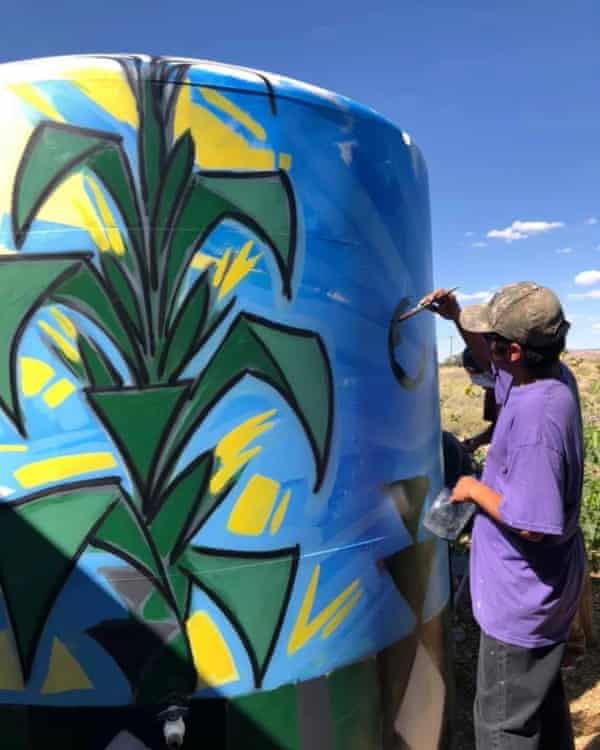
“The water itself is worth no more than $5,” explains Gladue, a former employee of the Black Mesa’s water department. “But to have someone carry it to you, you’re paying for someone else’s work. When you do the math, it all adds up.”
So in the spring of 2019, Gladue and Bedonie turned to the Black Mesa Water Coalition, a local non-profit environmental organization, which helped the couple secure a grant to install a rainwater collection system on their property.
Summers in Black Mesa have been atypically dry since then – even for the paltry south-western standards. Still, the little rain that does fall is now captured by a sloped gutter underneath the slanted metal roof of the sheep corral, funneled into two 600-gallon tanks and from there sent through a hose to a trough, where the couple’s curly-horned sheep can guzzle.
“I would say the system has been really good so far,” says Gladue. “And the sheep like the harvested water more than the other one, that’s for sure.”
Having witnessed the success of his cistern, she is open to going the next step and installing a gray-water reclamation system. She is also keen to help spread the technology to friends and neighbors who live without access to water. “I’m hoping to write grants for other people to get barrels,” she says. “We all need water to survive.”

Average Rating